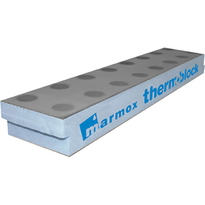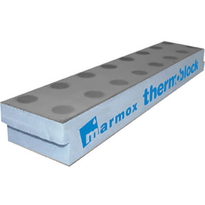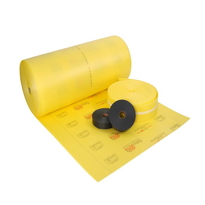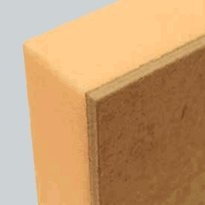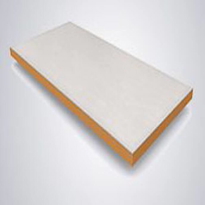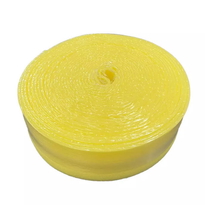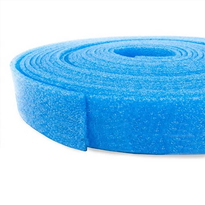Acoustic Flanking Strip
An acoustic flanking strip is a specialized material designed to seal gaps and junctions between walls, floors, and ceilings, effectively reducing noise transmission through structural breaches. These strips, often made from flexible foam or rubber, create a decoupling layer that minimizes flanking sound pathways. This helps to improve a building’s overall sound insulation and ensure compliance with regulations such as Part E standards.
Proper installation is essential to ensure all gaps and contact points are properly sealed. Using the correct techniques during installation can significantly enhance your acoustic performance, making spaces quieter and more suited to their intended use.
Understanding the Role of Flanking Strips in Acoustic Insulation
Understanding the importance of flanking strips in acoustic insulation involves recognizing how sound can bypass primary barriers and transmit through structural junctions, thereby compromising overall soundproofing effectiveness.
Flanking noise occurs when sound travels through gaps or edges where walls meet floors or ceilings. These alternative pathways can weaken the primary acoustic barrier, making it more difficult to achieve effective sound insulation.
Often, these junctions contain small spaces or physical contacts that facilitate sound transmission. Such weak points can undermine the integrity of dedicated soundproofing measures.
The installation of flanking strips helps to address this issue by creating a decoupling layer at critical junctions. This prevents direct contact between structural elements and reduces the likelihood of flanking noise. Additionally, reflective foil layers, like those used in YBS SuperQuilt, can be applied to improve thermal and acoustic performance by reducing radiant and conduction-based sound transfer.
Proper utilization of these strips ensures that sound remains contained within designated spaces. This not only enhances acoustic performance but also supports compliance with building regulations in both residential and commercial settings.
Key Features and Benefits of Acoustic Flanking Strips
Acoustic flanking strips are vital components within advanced soundproofing systems, offering numerous features that enhance their effectiveness. Typically made from flexible materials such as linked, closed cell polyolefin foam, these strips are designed specifically to absorb and dampen sound vibrations, thereby reducing the transfer of noise through structural gaps.
Generally shaped in an L-form, standard dimensions often include a thickness of around 6 mm, a width of approximately 23mm, and a depth of 52mm. Their versatile design facilitates straightforward installation along the junctions of flooring or walls, ensuring proper sealing of potential sound leaks.
Moreover, their adaptable nature allows for custom sizing to meet the specific architectural or acoustic requirements of any project.
The primary benefit of acoustic flanking strips lies in their capacity to significantly reduce flanking transmission—the noise that bypasses main soundproofing barriers by travelling through adjacent structural elements. By sealing gaps and joints effectively, they optimize overall acoustic performance, lowering both airborne and impact noise levels.
In addition to their functional advantages, these strips are cost-effective, durable, and compatible with a wide range of building systems. Their ease of installation and long-lasting performance make them indispensable for achieving superior soundproofing results, ensuring spaces maintain acoustic integrity and comfort.
Types and Design Variations for Different Applications
Different applications of acoustic flanking strips require specific types and design variations to optimize performance across various structural contexts. For example, closed-cell polyolefin foam provides effective isolation for flooring, while recycled waste rubber offers flexibility for ceiling perimeter strips. Flexible foam bands prevent contact between floating floors and structures, thereby reducing flanking sound. Conversely, constrained layer damping materials are designed to target resonant frequencies by converting vibrations into heat. The following table summarizes key variations:
Material Type |
Design Shape |
Application Focus |
| Closed-cell polyolefin foam | L-shaped for quick perimeter sealing | Floors; impact and airborne sound reduction |
| Recycled waste rubber | Flexible bands and strips | Ceilings and walls; environmentally sustainable solutions |
| Flexible foam bands | Self-adhesive and adaptable profiles | Wall-floor junctions; retrofitting |
| Constrained layer damping | Layered configurations | Resonance control in structural elements |
| Isolation membranes | Thin, molecular friction-based materials | Flanking sound reduction around openings |
These specialized materials and designs are selected to address specific acoustic challenges, ensuring the most effective noise control solutions tailored to each structural application. In addition, selecting appropriate materials is crucial for achieving long-lasting performance in diverse environments such as outdoor installations and high humidity areas, providing resilient and durable acoustic performance.
Installation Techniques for Optimal Soundproofing
Proper installation of acoustic flanking strips is essential to achieve effective soundproofing and prevent sound transmission through structural gaps. Strips, typically 5 mm or 10mm thick foam, must be tightly positioned along all perimeter edges before installing flooring panels or resilient layers, ensuring continuous isolation. Flanking pathways that are not properly sealed can allow sound to bypass the main partition, so attention to detail in placement is critical. Start at the room's farthest point from entrances to maximize coverage and avoid narrow remnants less than 200mm wide. When securing floors, adhesives should be carefully applied to the tongue and groove joints of floor panels, creating sealed, tight connections without the need for mechanical fixings. Sealant or acoustic caulk should be applied around edges, joints, and penetrations to ensure gaps are fully sealed. This reduces air leaks that could compromise soundproofing. Properly sealing all joints and penetrations minimizes the thermal bridging that can weaken overall insulation performance. Attention to workmanship—such as avoiding gaps or misaligned strips—is vital, as even small defects can significantly diminish the effectiveness of sound insulation.
Ensuring Compliance With Building Regulations
Building regulations set out comprehensive standards for soundproofing in both residential and commercial constructions, with strict requirements to safeguard occupant privacy and maintain structural integrity.
In England and Wales, Part E of the Building Regulations provides precise guidelines on minimum sound resistance levels. For new builds, a minimum of 45 dB airborne sound insulation must be achieved between neighboring dwellings, while conversions are required to reach 43 dB. Internal walls should provide at least 40 dB of sound insulation to ensure adequate privacy within a building. To support these standards, acoustic flanking strips are often employed in critical junctions to further enhance sound protection. The regulations also specify limits for impact noise transmission. Floors in new developments must restrict impact sound to a maximum of 62 dB, with conversions not exceeding 64 dB. These standards are essential for providing a comfortable living or working environment and must be thoroughly met during construction.
A crucial element in satisfying these requirements is the use of acoustic flanking strips. These specialized components are vital for isolating partitions and floors from surrounding structural elements, thereby reducing the transmission of flanking noise. Incorporating high-performance fire-resistant materials within these strips can also contribute to overall building safety and compliance.
To ensure effective performance, acoustic flanking strips should be carefully installed at perimeter edges during initial assembly. It's also important to seal all joints and gaps with appropriate acoustic sealants and to address potential flanking pathways at joints, penetrations, and connections.
Adhering to these procedures supports compliance with all relevant building standards and regulations, fostering environments that meet the desired acoustic performance levels.
Conclusion
Acoustic flanking strips are essential components in achieving effective soundproofing within buildings, as they prevent sound transmission through gaps and joints. Proper selection based on the specific application, correct installation techniques, and compliance with relevant regulations are vital to optimize performance. Understanding their features and functions enables their effective use in various construction scenarios, ultimately improving acoustic insulation and creating a quieter, more comfortable environment. Accurate implementation ensures the desired soundproofing effects are achieved while adhering to regulatory standards.
